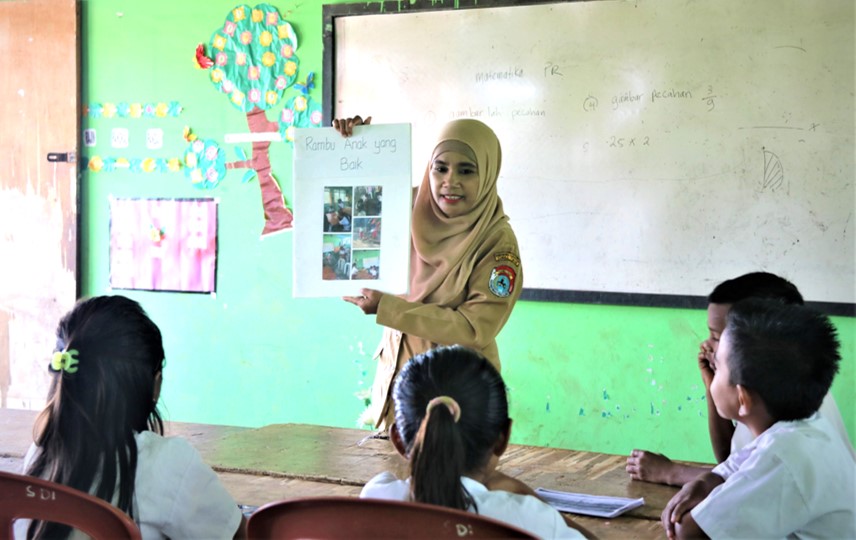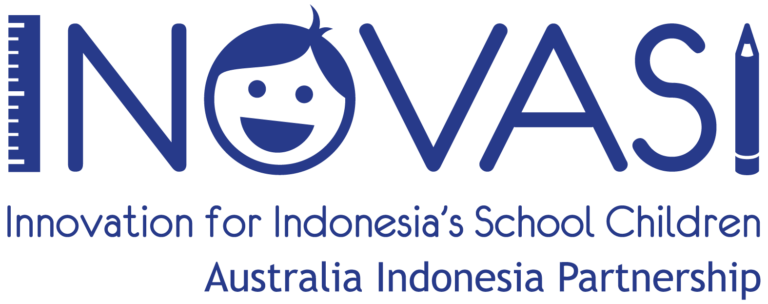
In the administrative sense, the scenario that supports learning by using HOTS is already in the Learning Implementation Plan (Rencana Pelaksanaan Pembelajaran, or RPP). Nonetheless, teachers must prepare materials and learning media that are creative, innovative, and contextual.
Based on this, Safinah, a grade 3 teacher at SD Inpres Haming state elementary school in East Sumba, NTT, developed a large book (known as the Big Book) about attitudes that will assist her in applied learning through HOTS for her students.
The application of learning HOTS began with the creation of the Big Book framework. Operational verbs for the three levels of HOTS form the basis for writing the stories in the Big Book that is being made, for example, how the students will later compare story ideas or perspectives to their daily lives (analysis level) and how to assess an action (evaluation level).
At the beginning of the lesson, Safinah invites the students to explain the picture on the cover of the Big Book and predict what the story is about.
“Children, what do you think this is a picture of?” asks Safinah while displaying the cover of the Big Book that shows a number of photos depicting elementary school students helping the people around them. The students’ answers vary, depending on which picture they are describing.
Safinah then asks, “What do you think the Big Book’s story is about?” The students’ answers once again vary. “This question aims to draw the students’ attention so that they can actively participate in learning, “Safinah explains.
Safinah continues the lesson by reading aloud each page of the Big Book, followed by having her students read the page. After finishing one sentence on a page, Safinah asks her students a question. For example, on one page, there is a picture showing a group of students who are cleaning the classroom.
“What are they doing?” asks Safina, referring to the students in the picture.
“Cleaning the classroom!” the students answer in unison.
“Why do you think they are cleaning the classroom?” continues Safinah, who then receives various answers from her students.
“What happens if we study in a dirty classroom?” asks Safinah, to test the students’ analytical skills. The goal is for the students to be able to compare the effects of a clean environment and a dirty environment on comfort and health.
On another page, the children are shown a picture of a student who has let their friends borrow their pencil.
“Is the student’s action good or not?” asks Safinah.
“It’s good!” answer the students.
“So, if any of your friends need help, do you help them?” continues Safinah, to which all the students would likely answer, “We do!”
In this example, Safinah tests her students’ ability to make their own decisions based on their assessments.
In addition to training the students’ higher order thinking skills, such interactive Teaching and Learning Activities (Kegiatan Belajar Mengajar, or KBM) help make the classroom atmosphere lively. The children are more excited to learn, and they understand lessons more quickly.
Safina recalls, “Prior to this, my students were not as interactive, so, I was never sure of whether they had understood the lesson or not.”






